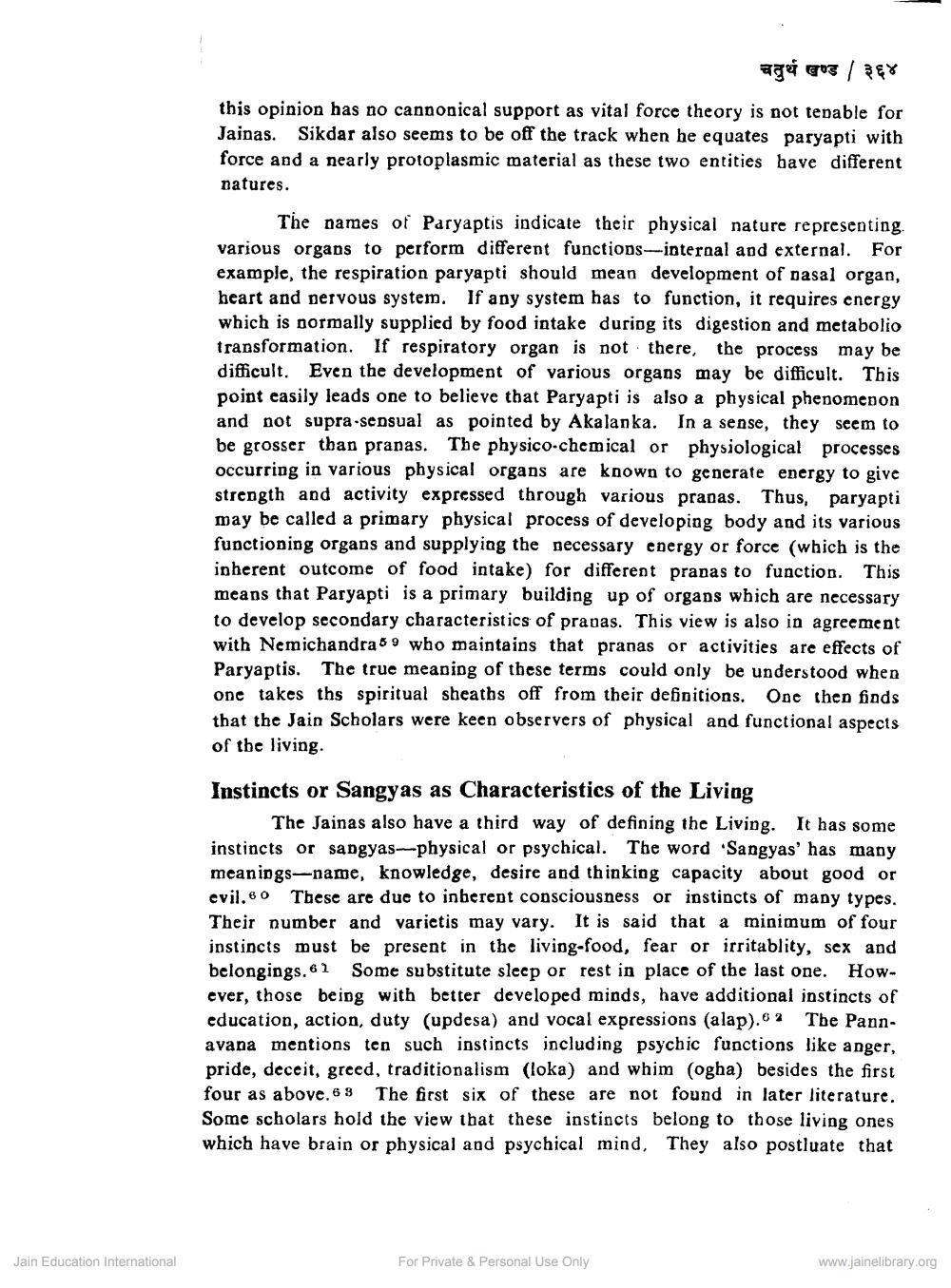________________
ager aus / 38
this opinion has no cannonical support as vital force theory is not tepable for Jainas. Sikdar also seems to be off the track when he equates paryapti with force and a nearly protoplasmic material as these two entities bave different patures.
The names of Paryaptis indicate their physical nature representing. various organs to perform different functions-internal and external. For example, the respiration paryapti should mean development of pasal organ, heart and nervous system. If any system has to function, it requires energy which is normally supplied by food intake duriog its digestion and metabolio transformation. If respiratory organ is not there, the process may be difficult. Even the development of various organs may be difficult. This point easily leads one to believe that Paryapti is also a physical phenomenon and not supra-sensual as pointed by Akalanka. In a sense, they seem to be grosser than pranas. The physico-chemical or physiological processes occurring in various physical organs are known to generate energy to give strength and activity expressed through various pranas. Thus, paryapti may be called a primary physical process of developing body and its various functioning organs and supplying the necessary energy or force (which is the inherent outcome of food intake) for different pranas to function. This means that Paryapti is a primary building up of organs which are necessary to develop secondary characteristics of prapas. This view is also in agreement with Nemichandra 69 who maintains that pranas or activities are effects of Paryaptis. The true meaning of these terms could only be understood when one takes ths spiritual sheaths off from their definitions. One then finds that the Jain Scholars were keen observers of physical and functional aspects of the living
Instincts or Sangyas as Characteristics of the Living
The Jainas also have a third way of defining the Living. It has some instincts or sangyas--physical or psychical. The word "Sangyas' has many meanings-name, knowledge, desire and thinking capacity about good or evil.60 These are due to inherent consciousness or instincts of many types. Their number and varietis may vary. It is said that a minimum of four instincts must be present in the living-food, fear or irritablity, sex and belongings.62 Some substitute sleep or rest in place of the last one. However, those being with better developed minds, have additional instincts of education, action, duty (updesa) and vocal expressions (alap). 62 The Pannavana mentions ten such instincts including psychic functions like anger, pride, deceit, greed, traditionalism (loka) and whim (ogha) besides the first four as above.6 3 The first six of these are not found in later literature. Some scholars hold the view that these instincts belong to those living ones which have brain or physical and psychical mind, They also postluate that
Jain Education International
For Private & Personal Use Only
www.jainelibrary.org




